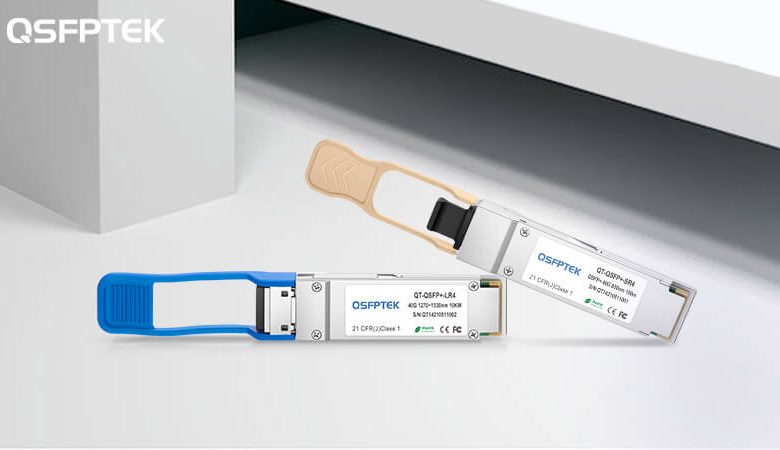What is 40GBASAE-SR4 and Why Do We Need to Know About it?

Introduction
40GBASE-SR4 is a 40 Gigabit Ethernet standard that allows for a maximum of 10.3125 Gbit/s per lane.
The 40GBASE-SR4 standard specifies the use of four lanes to transmit data at 10.3125 Gbit/s per lane, which is equal to 41.25 Gbit/s total throughputs, with each lane being able to handle 22.5 Gbit/s (10.3125*4).
40GBASE-SR4 is a 40 Gigabit Ethernet standard that uses 4 lanes of 10 Gigabit Ethernet to provide a total bandwidth of 40 Gbit/s.
The benefit of 40GBASE-SR4 is that it provides the same benefits as 10GBASE-SR10, but with twice the bandwidth. It also offers greater port density and lower power consumption which is why it’s been chosen for many data center applications.
Section topic: What is the Difference Between a Dental Hygienist and Dental Assistant?
Section keywords: dental hygienist vs dental assistant, job description, duties and responsibilities, salary
Introduction: A dental hygienist works with patients to provide oral care such as cleaning teeth, providing advice on oral hygiene practices, taking X-rays, and providing other preventive oral care. On the other hand, a dental assistant assists dentists in their work by performing administrative tasks such as taking patient histories and filling out.
What are QSFP+ Transceivers?
The QSFP+ transceiver is a type of optical transceiver that can be used to connect an Ethernet switch or router with a 10 Gigabit Ethernet port to a network device, such as a computer.
The QSFP+ transceiver has the same shape and size as the smaller SFP+ transceiver and is often used in data centers and other high-performance applications where space is at a premium.
QSFP+ Transceivers are a type of data communication equipment that is used to send and receive data between two devices. They are a type of optical transceiver that uses the QSFP+ connector.
QSFP+ transceivers have the following features:
-They can use multiple lanes, which means they can transmit data at a higher speed than other types of transceivers.
-They can be used in shorter distances than other types of transceivers.
-They are available in different speeds, meaning that they can transmit data at different rates depending on how much bandwidth is required by the device.
QSFP+ Transceivers are a type of optical transceiver which is used in data communication. These are typically used in high-speed data transmission over short distances.
The QSFP+ Transceivers are designed to transmit and receive data at speeds up to 40 Gbps and 10 Gbps respectively. They have an operating range of up to 100 meters and can be used in both active and passive cabling systems.

The 5 Best Transceivers for Data Centers in 2022
Data centers are vital to the operation of any business. They hold all the data that is valuable and important to a company.
Transceivers are devices that allow the transfer of data between two or more points over long distances. Transceivers play a key role in data centers because they help in connecting them with each other and other networks.
Transceivers are an integral part of data centers. They are used to send and receive data between the servers and the network. Transceivers can be classified into three types- wired, wireless, and fiber optic transceivers.
Wireless transceivers are the most common type of transceiver in a data center. They can be used to transmit data over a long distance without having any physical connection between two devices. In this article, we will take a look at five of the best wireless transceivers for data centers in 2022. They are 10GBASE-SR, 10GBASE-T, 40GBASE-SR4, 100GBASE-LR4, 100GBASE-PSM4.
Data centers are integral to the operations of countless businesses and organizations. The data centers are responsible for managing, storing, and processing large amounts of data.
Data centers need a reliable and secure way to communicate with the outside world. They need a transceiver that can provide the required bandwidth in all directions.
Conclusion: Why Should You Use a QSFP+ Transceiver?
The conclusion is a summary of what has been discussed in the article. It should provide insight into what you can do to get the most out of your QSFP+ Transceiver. The answer is simple. The QSFP+ transceiver is the future of data center connectivity. Its low power consumption, low latency, and high bandwidth make it the best choice for any data center.
The 40GBASE-SR4 is a standard for the transmission of 40Gbps Ethernet data over optical fiber. It is an optical Ethernet standard that operates at a nominal rate of 40 gigabits per second (Gbit/s). The IEEE 802.3bm specification defines the physical layer and media access control (MAC) layer protocol for the SR4 link. If you want to get more information about 40GBASE-SR4, please contact QSFPTEK via sales@qsfptek.com.